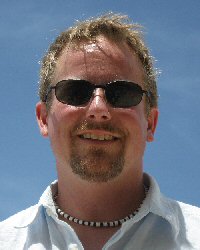Organick Lecture - University of Utah - Alan Kay
Phil Windley blogged about this lecture series, and the fact that Alan Kay was speaking today. I had to take the time to come and hear Alan, as his focus on computing for children and education demonstrates a true commitment to the future.
I have often used his quote: The best way to predict the future is to invent it. His opening slide had the quote ... slightly modified ... toggling between:
- Is the Best Way To Predict The Future To Invent It?
- Is the Best Way To Predict The Future To Prevent It?
Some points from his talk:
- he feels that our industry has been mired for years ... perhaps since the 1970's
- the commercialization of Personal Computers was a tremendous distraction from computer science ... and we may never recover from this distraction
- computer science is teaching non-scalable algorythms and data structures
- this is like teaching gears ... something that is non-scalable
- the Internet is a vastly different solution that is highly distributed and operates non-stop ... and scales
- the human body consists of 100 trillions cells, created through only 50 cell divisions
- all of the atoms in your body have been changed out within the last 7 years ... even your bones!
He began to talk about "engineering" and gave several examples of what he feels is real engineering - the building of the Empire State Building (<3000 people for <11 months start to occupancy), the massive pumps that survived the longest during the Katrina hurricane - built in 1922 and 1912!
He talked about the real meaning of the word "Architecture" - the building of arches. He used this to connect analogies of Microsoft Windows, and the ancient pyramids of Egypt. The Egyptians had no arches, and so they built the pyramids by piling on rock, creating a "garbage dump", and then covering it with a "pretty UI". It was only those who understood and perfected the building of arches that truly developed architecture.
Humans have been on earth for ~100,000+ years, however Science has only been around for ~400. But it didn't emerge from genetic evolution ... so Science has always existed. He then showed the video called "Private Universe" which was a series of interviews with Harvard University graduates who were being asked basic questions about "What causes the seasons?" and "What causes the phases of the moon?" The majority were not able to answer accurately.
I have to admit that I stopped taking notes as Alan went into a very interesting conversation about the Future of Printing. He started to talk about the original printing press, and how it immediately began to be used to mimic the handwritten manuscript books of the time ... instead of creating a new type of communications ... a new medium to argue within society and to present new ideas.
Alan used this as a way to describe the revelation that hit him when he first thought of children using computers. Up to that point, they had simply thought of computers looking like terminals, without the mainframe. He drew a cartoon back in the 1960s of children using what would become his idea of the dynabook.
He emphasized the stagnent aspects of computer science and software engineering ... at the end he questioned how students of these disciplines were using yesterdays technologies - hardware and software - when trying to create the solutions of the future. He commented that it was only because his team was using $20,000 computers more powerful than anything in its time, that they were able to create solutions for the future. This is a really good point ...
As usual ... an amazing presentation that spurs a lot of thoughts.


0 Comments:
Post a Comment
<< Home